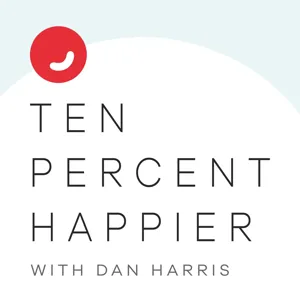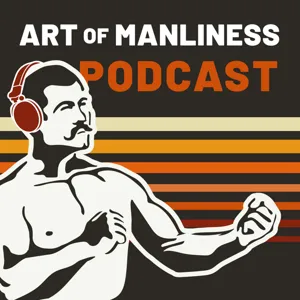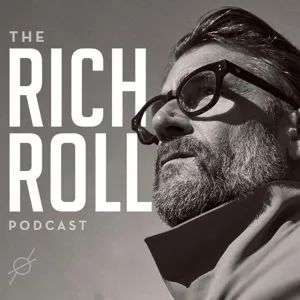Podcast Summary
Exploring Community Connections and Financial Stability: Building strong community ties and financial goals contribute to personal growth and resilience. Neighbor to Neighbor highlights the importance of connecting with neighbors, while State Farm advocates for a positive mindset and financial planning.
Building strong community connections and financial stability are essential for personal growth and resilience. Neighbor to Neighbor, a California volunteer network, emphasizes the importance of connecting with neighbors and preparing for unexpected events. State Farm shares the belief that having a positive mindset and financial goals can lead to success. The podcast "Technically Speaking" explores the role of artificial intelligence in shaping the future. The episode of "Stuff to Blow Your Mind" delves into the complex question of why people seek out pain and the potential benefits, although it's important to note that this is not an endorsement for self-harm. Historical practices like flagellation and the use of hair shirts for spiritual reasons illustrate the intriguing relationship between pain and pleasure.
Historical practices of self-inflicted pain as penance and devotion: Throughout history, various religions have used self-inflicted pain as a form of penance and devotion, including wearing penitent shirts, self-flagellation, and fire walking.
Throughout history and across various religions, the practice of intentionally inflicting pain on oneself, known as mortification of the flesh, has been used as a form of penance and devotion. From the penitent shirts worn by early Christian sects to the self-flagellation practiced by some Shia Muslims, these acts serve as a reminder of transgressions and a way to seek forgiveness. Fire walking rituals, such as the Christian tradition in northern Greece, also involve physical pain and are believed to demonstrate deep devotion. The Phuket Vegetarian Festival in Thailand, while primarily focused on abstaining from meat, also includes fire walking as part of the celebration. Despite the apparent self-harm, these practices often have a transcendent aspect and are deeply rooted in faith.
Religious and Cultural Practices Involving Body Modification and Self-Mortification: From piercings and bloodletting to carrying heavy burdens or suspension, various religious and cultural rituals employ body modification and self-mortification for spiritual connection. These practices, rooted in belief systems and social constructs, involve pain, pleasure, and devotion, with observers playing a crucial role.
Body modification and self-mortification are practices found in various religious and cultural rituals around the world, serving as mediums for connecting with the divine. These acts, which range from piercings and bloodletting to carrying heavy burdens or suspension, are rooted in belief systems and wrapped within social constructs. The Thai Pussam Festival, for instance, involves shaving heads, undertaking pilgrimages, and self-mortification, while the Okiepaw hook suspension ceremony is a Native American ritual where individuals are suspended from hooks pierced into their skin. Despite the perceived extremity, these practices share themes of pain, pleasure, and devotion, and are essential components of the rituals. Additionally, the role of the observer is significant, as they too are part of the experience. These examples demonstrate the complex relationship between physical pain, mental endurance, and spiritual growth.
Exploring the Intersection of Pain and Pleasure: Throughout history, people have practiced pain for spiritual growth, physical endurance, artistic expression, and consensual pleasure.
Throughout history and across cultures, there exist practices that involve voluntary or self-inflicted pain, often as part of religious or artistic traditions. These practices, while disturbing to some, serve various purposes, including spiritual transcendence, physical endurance, and artistic expression. The BDSM community is an example of a secular tradition that also explores the intersection of pain and pleasure in a consensual context. Even our daily routines, like working out, can push us into uncomfortable but rewarding areas. Understanding these practices can help us appreciate the complexity and diversity of human experiences.
Pain: More Than Just a Sensation: Understanding pain as a complex experience involving both pleasure and pain can help us approach it with a more nuanced perspective.
Pain, whether physical or emotional, is a complex experience that involves more than just the sensation of hurt. Astepro, a fast-acting nasal allergy spray, was discussed as an example of quick relief for nasal allergy symptoms. It starts working in 30 minutes, providing relief from nasal congestion, runny and itchy nose, and sneezing. The discussion then shifted to the idea that pain, like the hurt in John Cougar Mellencamp's song "Hurt So Good," can seem paradoxical. Pain is often associated with negative emotions, but it can also bring pleasure or be a part of experiences that we find enjoyable. Research has shown that the amygdala, the part of the brain responsible for processing emotions, processes both pain and pleasure. This complex relationship between pain and pleasure was further explored with a reference to the movie "Roadhouse" and its philosophical bouncers. The takeaway is that pain is a multifaceted experience, and understanding this can help us approach it with a more nuanced perspective.
Our brains transform painful experiences into pleasurable ones through dopamine and endorphins: Our brains release dopamine and endorphins in response to pain, turning discomfort into pleasure through habituation and ritualization. This applies to physical, emotional, and symbolic pain.
Our brains are complex systems that respond to various stimuli, including pain, through the release of dopamine and endorphins. These neurotransmitters can transform painful experiences into pleasurable ones through the process of habituation and ritualization. This phenomenon is not limited to physical pain but can also apply to emotional or symbolic pain, such as in music or art. Our brains seek patterns and try to make sense of discomfort and pain, and even unexpected or metaphorical pain can trigger a release of dopamine when the pattern is resolved. This explains why some people find pleasure in activities that may seem painful to others, such as running or listening to tear-jerking songs. Ultimately, our perception of pain and discomfort is shaped by our brains' complex reward systems and our individual experiences and expectations.
The cost of pain leads to stronger social bonds: Cognitive dissonance theory explains how painful experiences, whether self-inflicted or part of a ritual, can lead to stronger social bonds due to the justification of effort and the collective effervescence created.
The experience of pain and suffering, whether self-inflicted or part of a ritual or communal event, can lead to intense social bonds. According to cognitive dissonance theory, when the cost or effort spent in pursuing a goal is higher than its reward, individuals justify the effort and value the outcome more. This is evident in various rituals of passage, such as hazing in fraternities or corporate retreats, where the shared experience and collective effervescence create a sense of cohesion and unity among participants. These experiences, despite being painful or uncomfortable, are often seen as worth it due to the strong social bonds formed.
Cooperation leads to emotional alignment and increased generosity: Participating in communal activities can increase generosity and emotional alignment through shared experiences and expectations of suffering
Cooperative experiences, whether it's singing hymns at church, participating in rituals at festivals, or even icebreakers at corporate retreats, can lead to emotional alignment and increased generosity among individuals. This cooperation is a cornerstone of humanity's success and can be seen in various communal activities. A study by Zygielbaum demonstrated this when he found that those who engaged in painful rituals gave twice as much as those who didn't. Additionally, the "martyrdom effect" shows that people donate more when they expect to suffer, such as during the ALS Ice Bucket Challenge. This sense of participation and shared experience can make individuals feel like heroes in the story and increase their likelihood of contributing to the group.
Connecting with neighbors strengthens communities and prepares for unexpected events: Explore the Neighbor to Neighbor campaign, AI's impact on industries through podcasts, and the power of storytelling and community building through challenges
Building strong community bonds and preparing for unexpected events can be achieved through connecting with neighbors. This was emphasized in the Neighbor to Neighbor campaign, which encourages helping each other out and growing your community. Meanwhile, in the tech world, artificial intelligence is expected to play a significant role in shaping the future. Through podcasts like Technically Speaking, we can explore how AI is revolutionizing various industries, from healthcare to entertainment. Lastly, the ice bucket challenge serves as a powerful example of storytelling and community building, even if it may seem like a simple and silly act. The latest iteration of this trend, the wake up call challenge for UNICEF, continues to encourage sharing and raising awareness for a good cause, albeit in a different way.
Depictions of suffering and pain connect us: Historically, humans have connected through shared experiences of suffering and pain, seen in religious rituals, social media trends, and stories, providing a sense of control and engagement.
The human experience is deeply connected to suffering and pain, whether it's through religious rituals, social media trends, or stories we tell. Historically, depictions of Jesus on the cross have shifted from showing a god above human suffering to one that engages in physical pain, allowing people to connect and relate. This concept can be seen in various forms, such as fundraising challenges on social media or even in stories and art. The idea of control versus chaos also plays a role, with rituals providing a sense of control and engagement in a flow state. Ultimately, stories and experiences that involve suffering are more relatable and engaging to us as humans.
Pain as a form of psychological justice and punishment: Feeling guilty or immoral can make pain less rewarding, while intense pain during BDSM and meditation can lead to altered states of consciousness and feelings of transcendence.
Pain, even self-inflicted, can lead to altered states of consciousness and feelings of forgiveness or transcendence. A study conducted by Brock Bastian in 2011 found that individuals who felt guilty or immoral after writing about ostracizing others held their hands in cold water for longer durations and described the pain as less guilt-reducing than those who did not feel guilty. This suggests that pain can serve as a form of psychological justice and punishment. Additionally, research links intense pain experienced during BDSM practices to altered states of mind, activating the dorsal lateral prefrontal cortex, which is involved in distinguishing self from others and out-of-body experiences. These findings provide insight into the psychological benefits of pain and self-inflicted suffering, which may contribute to the appeal of practices like BDSM and meditation.
Exploring the interconnection of pain and pleasure through ritual practices: Pain and pleasure can be interconnected in unexpected ways through practices like suspension, challenging our perceptions and leading to clarity and transcendence.
Pain and pleasure can be interconnected in unexpected ways. The practice of suspension, or hanging from hooks, may seem counterintuitive as a means to find peace and clarity, but it has been used throughout various cultures and traditions as a way to test limits, clear the mind, and facilitate visions or transcendence. This concept, often referred to as the "zen of pain," challenges our perceptions of pain and pleasure and their roles in human experiences. It's important to note that this discussion is not an endorsement of self-harm or chronic pain, but rather an exploration of the intriguing ways pain and pleasure intersect in human culture. If you're interested in learning more about chronic pain or other related topics, check out our past episode "The Future of Pain" on our website. And if you have any thoughts or examples of ritual pain practices, please share them with us at blowthemind@howstuffworks.com.
Ebay Guaranteed Fit: Seamless Installation of Car Parts: Shop eBay Motors for car parts with confidence. The 'Ebay Guaranteed Fit' policy ensures a perfect fit, saving time and money on returns and exchanges.
EBay Motors offers a guarantee of a perfect fit for your vehicle's replacement parts, ensuring a seamless installation process. With the "Ebay Guaranteed Fit" policy, you can purchase parts with confidence, knowing that they will fit your vehicle right the first time. Additionally, the competitive pricing on eBay Motors means you can save money on car repairs while avoiding the frustration of returns and exchanges due to ill-fitting parts. So, keep your ride running smoothly and cost-effectively by shopping for your automotive needs on eBay Motors. Remember, eligible items only and exclusions apply.






